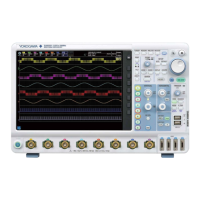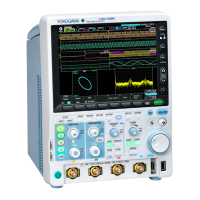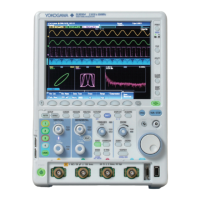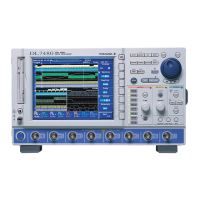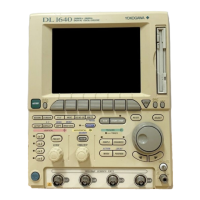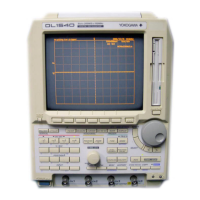5-124
IM 710105-17E
:MATH<x>:LABel[:DEFine]
Function Sets or queries a computed waveform label.
Syntax
:MATH<x>:LABel[:DEFine] {<String>}
:MATH<x>:LABel[:DEFine]?
<x> = 1 or 2 (1 only for 2-channel models)
<String> = Up to eight characters
Example
:MATH1:LABEL:DEFINE "MATH1"
:MATH1:LABEL:DEFINE?
-> :MATH1:LABEL:DEFINE "MATH1"
:MATH<x>:LABel:MODE
Function Sets or queries the display on/off status of a
computed waveform label.
Syntax
:MATH<x>:LABel:MODE {<Boolean>}
:MATH<x>:LABel:MODE?
<x> = 1 or 2 (1 only for 2-channel models)
Example
:MATH1:LABEL:MODE ON
:MATH1:LABEL:MODE?
-> :MATH1:LABEL:MODE 1
:MATH<x>:OPERation
Function Sets or queries an operator.
Syntax
:MATH<x>:OPERation {ECOunt|FILTer|
INTegral|MINus|MULTiple|PLUS|RCOunt|
USERdefine},{<NRf>|MATH1}[,{<NRf>|
MATH1}]
:MATH<x>:OPERation?
<x> = 1 or 2 (1 only for 2-channel models)
<NRf> = 1 to 4
Example
:MATH1:OPERATION PLUS,1,2
:MATH1:OPERATION?
-> :MATH1:OPERATION PLUS,1,2
Description • For unary operators
(
ECOunt|FILTer|INTegral
), set the source
waveform in the first <NRf>.
• For binary operators
(
MINus|MULTiple|PLUS|RCOunt
), set the
source waveform of the first term in the first
<NRf> and the source waveform of the second
term in the second <NRf>.
• For user-defined operators, you do not need to
use <NRf>.
:MATH:RCOunt?
Function Queries all rotary-count computation settings.
Syntax
:MATH:RCOunt?
:MATH<x>:FILTer:TIME
Function Sets or queries a phase shift delay time.
Syntax
:MATH<x>:FILTer:TIME {<Time>}
:MATH<x>:FILTer:TIME?
<x> = 1 or 2 (1 only for 2-channel models)
<Time> = See the DLM2000 Features Guide for
this information.
Example
:MATH1:FILTER:TIME 1S
:MATH1:FILTER:TIME?
-> :MATH1:FILTER:TIME 1.000E+00
:MATH<x>:FILTer:TYPE
Function Sets or queries a filter type.
Syntax
:MATH<x>:FILTer:TYPE {DELay|MAVG|
IHPass|ILPass}
:MATH<x>:FILTer:TYPE?
<x> = 1 or 2 (1 only for 2-channel models)
Example
:MATH1:FILTER:TYPE DELAY
:MATH1:FILTER:TYPE?
-> :MATH1:FILTER:TYPE DELAY
:MATH<x>:FILTer:WEIGht
Function Sets or queries a moving average weight.
Syntax
:MATH<x>:FILTer:WEIGht {<NRf>}
:MATH<x>:FILTer:WEIGht?
<x> = 1 or 2 (1 only for 2-channel models)
<NRf> = 2 to 128 in 2n steps
Example
:MATH1:FILTER:WEIGHT 2
:MATH1:FILTER:WEIGHT?
-> :MATH1:FILTER:WEIGHT 2
:MATH<x>:INTegral?
Function Queries all integration settings.
Syntax
:MATH<x>:INTegral?
<x> = 1 or 2 (1 only for 2-channel models)
:MATH<x>:INTegral:SPOint
Function Sets or queries the integration start position.
Syntax
:MATH<x>:INTegral:SPOint {<NRf>}
:MATH<x>:INTegral:SPOint?
<x> = 1 or 2 (1 only for 2-channel models)
<NRf>=−5to5divisions(instepsof10divisions/
display record length)
Example
:MATH1:INTEGRAL:SPOINT 1.5
:MATH1:INTEGRAL:SPOINT?
-> :MATH1:INTEGRAL:SPOINT 1.5000000
:MATH<x>:LABel?
Function Queries all computed waveform label settings.
Syntax
:MATH<x>:LABel?
<x> = 1 or 2 (1 only for 2-channel models)
5.19 MATH Group
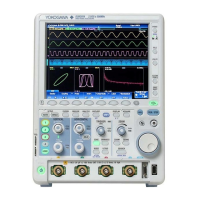
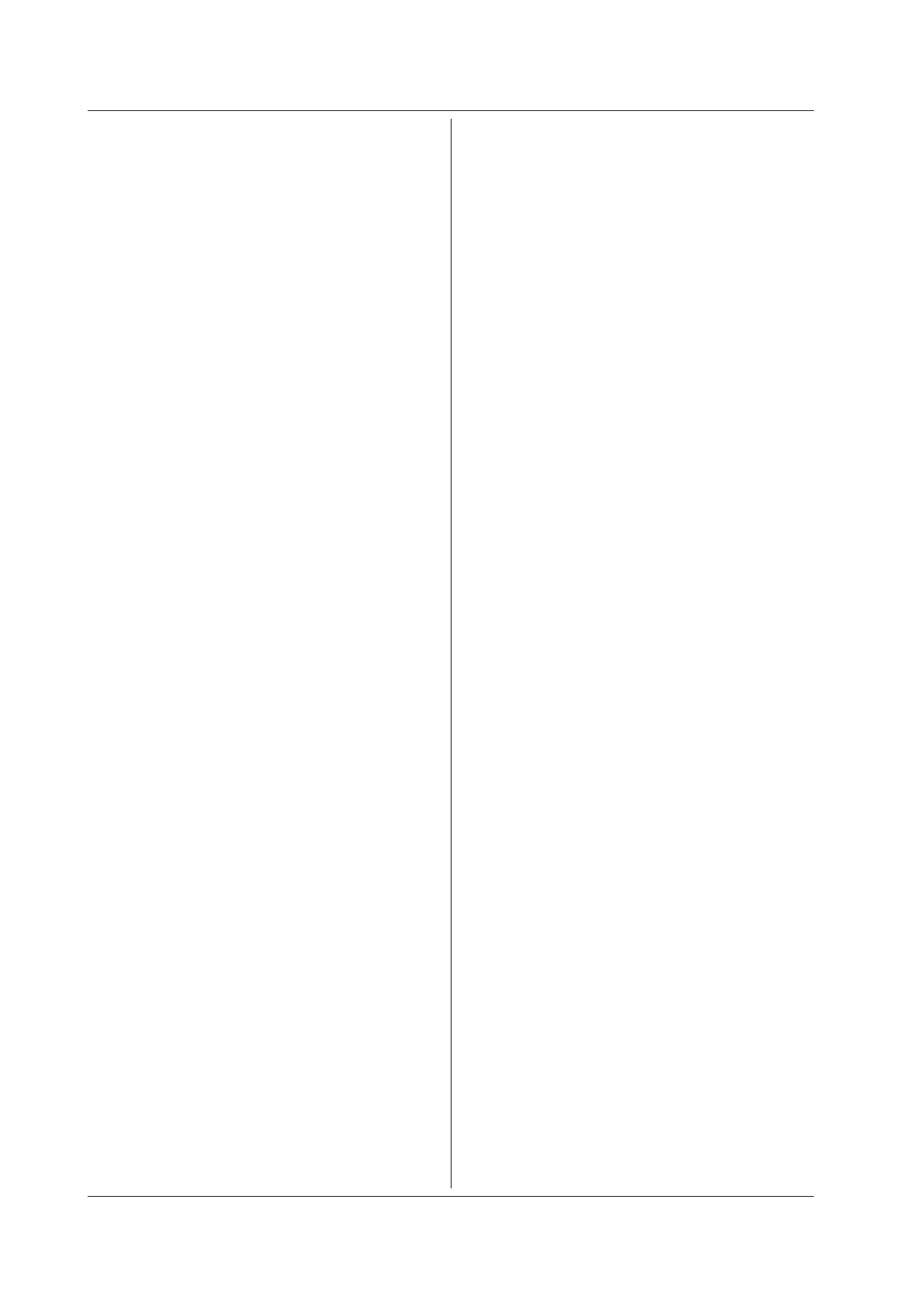